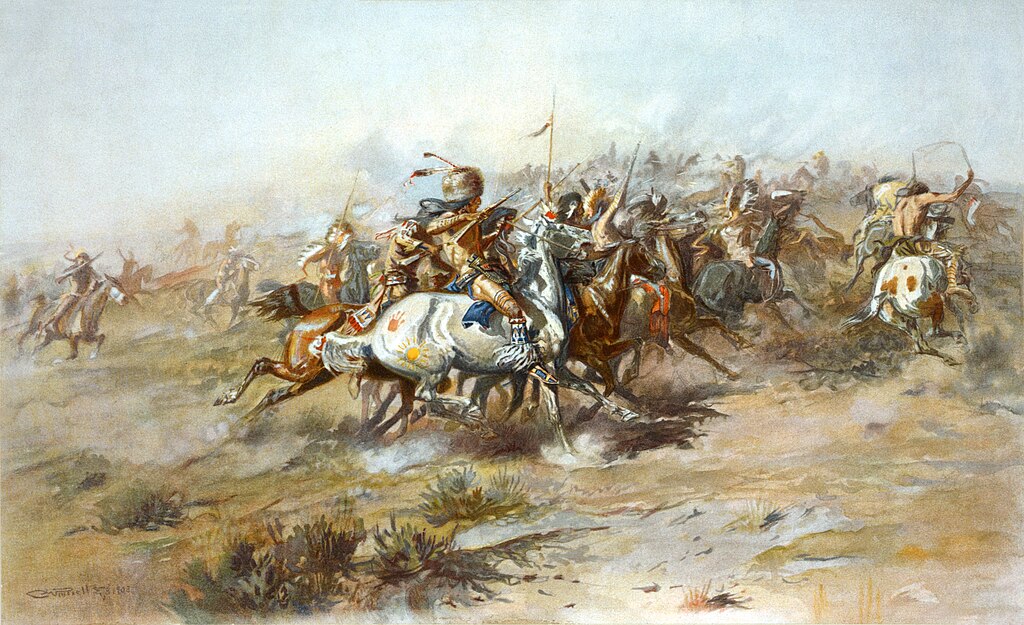The Battle of Little Bighorn, commonly known as Custer’s Last Stand, began on June 25, 1876. General Custer, leading the U.S. 7th Cavalry, faced off against the Lakota and Cheyenne Native American tribes in a brutal conflict over land control and escalating tensions. This battle is often regarded as the largest and most significant encounter during the Great Sioux War of 1876.
In 1868, the United States signed a treaty with the Lakota and Cheyenne tribes, granting them exclusive rights to the Black Hills area in western South Dakota and northern Wyoming. However, in 1874, gold was discovered in the region, and the tribes refused to sell the land back to the United States, even under pressure. The discovery of gold triggered a rush of white settlers into the area, despite the treaty that recognized the tribes’ ownership of the land. As tensions between the U.S. government and the Lakota and Cheyenne tribes escalated, the government demanded that the tribes relocate to reservations, a request many refused to comply with.
On June 25, 1876, General Custer received orders to confront Native American tribes living along the Bighorn River in Montana. Custer and the U.S. 7th Cavalry launched an attack on what they believed was a small village, but instead they encountered a large force of Lakota and Cheyenne warriors. The cavalry was quickly overwhelmed, resulting in the complete destruction and death of Custer and his troops. Although this was a significant victory for the Native American tribes, it led to increased military pressure on them, ultimately resulting in their confinement to designated reservations. The Battle of Little Bighorn has since become a lasting symbol of Native American resistance and the conflict between white settlers and Native American cultures.

